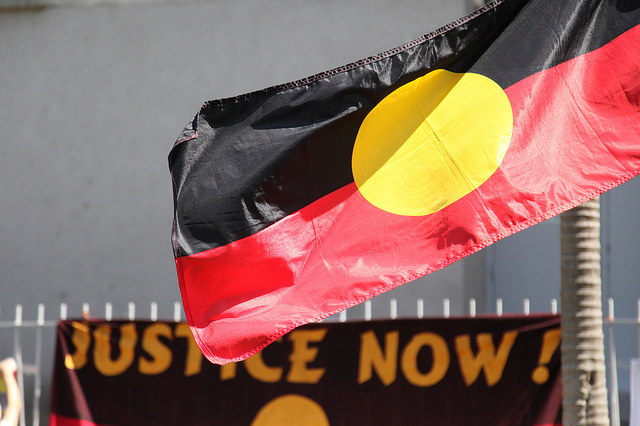
Articles
Nicholas Clements, Reconciliation in Tasmania: War, Memory and Empathy
Ellen Hays, The Koori Court and Changing Racial Narratives
Elizabeth Grant and Sarah Paddick, Aboriginal Women in the Australian Prison System
Melissa Stoneham, Portraying Positive Stories in Aboriginal Health
Melanie Schwartz and Chris Cunneen, Redressing Over-Incarceration, Addressing Human Rights: What Can Justice Reinvestment Do in Australia?
Ros Kid, Justice Now
Sayomi Ariyawansa, Still Not “Bringing Them Home”: Victorian Aboriginal Children in Care on the Rise
Dr Katelyn Barney, University is Not Seen as a Black Space
Dr Shelley Bielefeld, Native Title in Australia – Commercial Rights and the ALRC Review
Lesley Russel, Unfair and Unhealthy
Alison Vivian and Craig Longman, What would evidence-based policy look like in relation to Aboriginal and Torres Strait Islander People?
Interviews
Emma McDonald, Create Footprints Worth Following, interview with Nada Aldobasic
A wealth of articles were published during September on Right Now’s theme of Indigenous Rights in Australia. The impact of European colonisation on Indigenous peoples has been disastrous; dispossession, disease, slaughter and the treatment of Indigenous peoples as second-class citizens are a stain on Australia’s past. Today, when compared with the wider population, Indigenous peoples are generally in poorer health, more frequently imprisoned, less likely to attend university, more likely to suffer discrimination, and are likely to die earlier. We all know these facts. And Australia is still way behind in many of its goals to redress poor life expectancy, literacy rates, and employment of Indigenous peoples.
In September the Prime Minister for Indigenous Affairs, Tony Abbott, spent a week governing from Arnhem Land, as per his election promise, while announcing that the arrival of British settlers in Australia was “all bad” for Indigenous Australians. He also indicated that a timeline would be set for a referendum on the recognition of Indigenous peoples in the Constitution, as a Joint Select Committee welcomed submissions on steps to progress a referendum.
Meanwhile, our PM was also criticised for his comments that the arrival of the First Fleet was the defining moment of Australia’s history and, on the eve of NAIDOC week, that Australia was unsettled before British arrival. This comes in the wake of the May Budget, in which more than $500 million was cut from Indigenous affairs programs. It appears we still have a long way to go.
During September, our authors enlightened and educated us on a host of human rights issues relating to Indigenous peoples.
Addressing Indigenous incarceration, Melanie Schwartz and Chris Cuneen explained the US justice reinvestment model and how it might assist in breaking the cycle of jailing Indigenous offenders in Australia. Elizabeth Grant and Sarah Paddick examined why Indigenous women are the fastest growing group in the Australian prison population, and why their needs have not been met by our prison systems. Ellen Hays shared her impressions of the Koori Courts.
Looking at the impact of budget measures on Indigenous programs and services, particularly in relation to health outcomes,Lesley Russel concluded that Indigenous people will find it tough to access needed services, and that the cuts will only impede the task of “Closing the Gap”. Melissa Stoneham emphasised the importance of focusing on positive health stories of change and commitment in Aboriginal communities.
Turning to policy issues, Dr Shelley Bielefeld suggested that the definition of native title (the form of traditional Indigenous land ownership recognised by Australian law) should be expanded to include commercial rights to exploit land. WhileAlison Vivian and Craig Longman wrote that the failure of governments to enact effective policy in relation to Indigenous peoples is a result of the failure to give genuine control and governance to Indigenous peoples. Sayomi Ariyawansa contended that a focus on the end-of-the-spectrum child protection policies has led to the over-representation of Victorian Aboriginal children in out-of-home care. And moving into the university sphere, Dr Katelyn Barney argued that universities need to create better pathways and environments for Aboriginal and Torres Strait Islander students to enter into Research Higher Degrees.
Taking us back into the past, Ross Kid explained how successive Queensland governments once assumed vast “protective” powers over Indigenous people. This led to working arrangements through which the Chief Protector of Aboriginals controlled access to Indigenous workers’ wages, and Indigenous peoples in Queensland were robbed of their salaries. Nicholas Clements discussed the Black War in Tasmania and the challenge of reconciliation in Tasmania when the state’s violent history is not officially recognised.
We hope you continue to enjoy these articles from our September 2014 issue.


